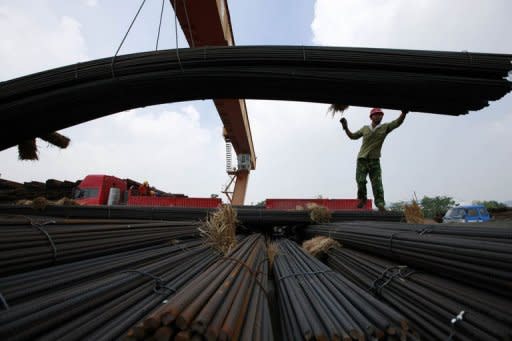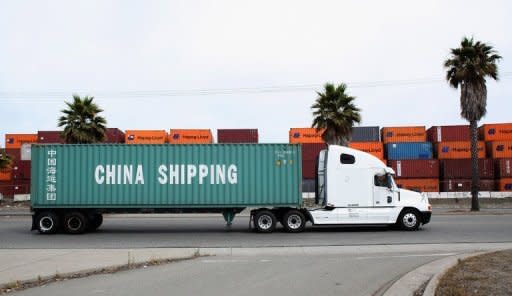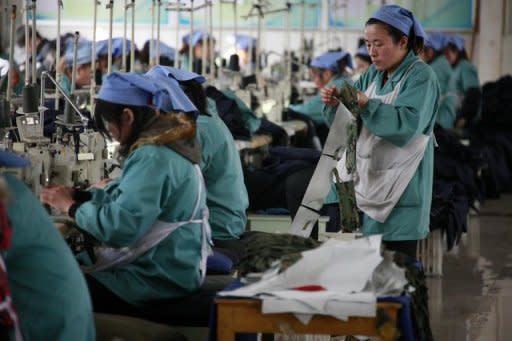China exports, imports slow in July
China's exports and imports slowed for the second consecutive month in July, official data showed Friday, highlighting worsening conditions in the world's second-biggest economy. The figures -- sharply below market expectations -- add to concerns that China's economy is still losing steam despite government efforts to prop up growth and investment, in an effort to lessen the impact of the global slowdown. Analysts said the weak data, combined with disappointing figures released Thursday, created further impetus for Beijing to announce more stimulus policies. China's exports grew at a marginal one percent in July from a year earlier to $176.9 billion, the General Administration of Customs said in a statement, down from the 11.3 percent gain seen in June. Imports rose 4.7 percent year-on-year to $151.8 billion last month, it said, compared with the June increase of 6.3 percent, indicating slowing domestic demand. The trade surplus narrowed to $25.1 billion last month from $31.7 billion in June. China, the world's biggest exporter, has been hit by weakness in overseas economies including debt-ravaged Europe, a key trading partner, while a sluggish property market and softening consumer spending have also proved problematic. Exports to Europe fell 3.6 percent to $192.4 billion in the first seven months of the year from the same period in 2011, according to the data. Shipments to the United States, meanwhile, rose 11.4 percent year on year in the seven months through July to $195.4 billion. "This complicates the prospects for an imminent recovery," IHS Global Insight economists Ren Xianfang and Alistair Thornton said regarding the July trade data. "With the export sector losing speed faster than expected, the government's current investment stimulus plan looks woefully inadequate," they wrote in a research note. "The government is likely to respond by ramping-up its stimulus efforts, with both monetary and fiscal guns firing." Zhang Zhiwei, an economist with Nomura International (HK) Limited, expects exports to remain weak in the coming months, as suggested by flat growth in imported parts for re-export purposes, in July. "The set of weak macro data puts more pressure on the government to loosen policies," he said in a note. China has already this year taken the rare step of slashing interest rates twice in quick succession while also lowering requirements for how much money banks must keep in reserve as it looks to spur lending. A slowdown in consumer price inflation in July for the fourth straight month is seen as giving authorities more room to further loosen monetary policy in a bid to boost the slumping economy. The consumer price index rose 1.8 percent last month year-on-year, the government also said Thursday, the lowest level since January 2010. Chinese shares closed down 0.24 percent in response to the latest figures on Friday. The benchmark Shanghai Composite Index slipped 5.29 points to 2,168.81. However, it rose 1.69 percent for the week on expectations of monetary easing. On Thursday the government announced that industrial production -- which measures output at the country's factories, workshops and mines -- and retail sales, the main measure of consumer spending, both slowed in July. Fixed-asset investment -- a key gauge of official spending on infrastructure and on which authorities are pinning hopes for a recovery -- rose 20.4 percent on year in the first seven months of the year -- a weak performance by Chinese standards. The lower-than-expected increase in investment was in part due to a further cooling in China's property market, analysts said, as Beijing maintains a tight grip on the sector through measures such as bans on buying second homes and higher minimum downpayments. In more gloomy news, the central bank said Friday that China's bank lending slumped 41.3 percent in July from the previous month. Chinese banks extended 540.1 billion yuan ($84.9 billion) in new loans in July, compared with 919.8 billion yuan in June, the People's Bank of China said in a statement.





